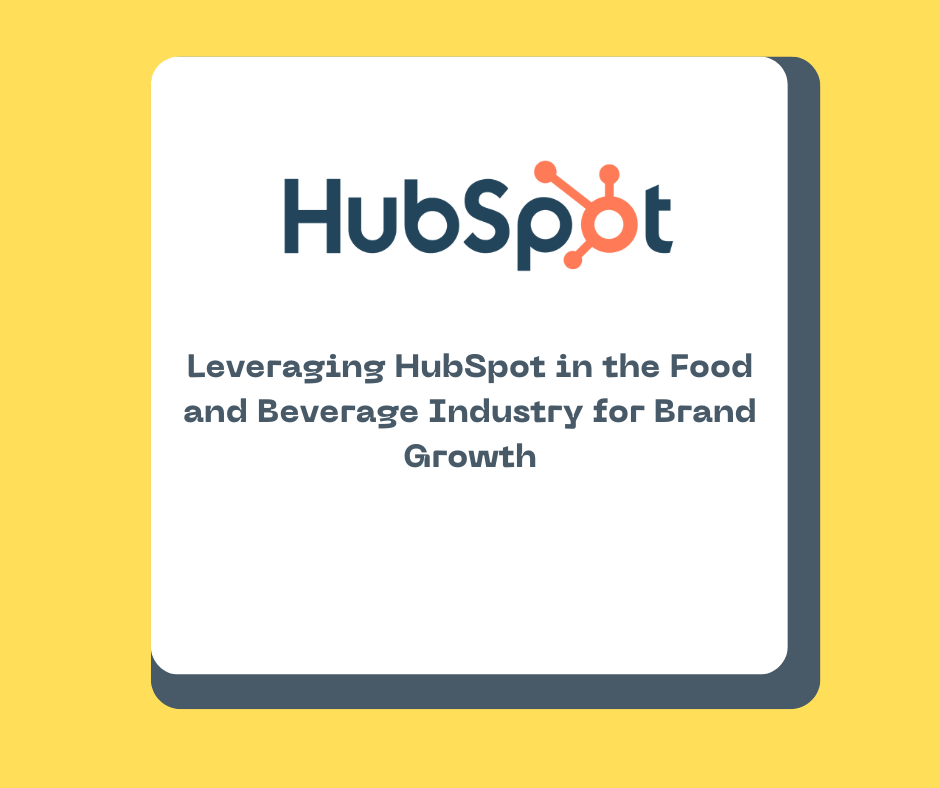In the dynamic food and beverage industry, businesses continuously face the challenge of adapting to changing consumer preferences and increasing competition. HubSpot, a leading Customer Relationship Management (CRM) platform known for its powerful marketing and sales tools, presents a viable solution for companies aiming to enhance their brand visibility and growth. This article explores how food and beverage companies can leverage HubSpot to streamline their marketing efforts, improve customer relationships, and ultimately drive brand growth.
Understanding the Unique Needs of the Food and Beverage Industry
The food and beverage sector is characterized by its fast pace and the constant need for innovation to attract and retain customers. Businesses in this industry must manage a broad range of dynamics, from supply chain logistics to changing consumer tastes and dietary trends. Additionally, the rise of social media and online reviews has shifted power into the hands of consumers, making brand reputation more volatile and directly linked to customer experiences.
Implementing HubSpot for Strategic Growth in the Food and Beverage Sector
1. Centralizing Customer Data
HubSpot’s CRM capabilities allow food and beverage companies to consolidate customer data into a single, accessible platform. This centralized data repository can include customer preferences, purchase history, interaction logs, and feedback. Having a unified view of customer information helps businesses tailor their marketing and sales strategies more effectively, ensuring that promotions and communications are relevant to each customer segment.
2. Enhancing Customer Engagement with Personalized Marketing
Personalization is key to winning customer loyalty in the food and beverage industry. HubSpot’s marketing automation tools enable companies to send personalized emails, create tailored landing pages, and segment customers based on their behavior and preferences. For example, a coffee shop chain can use HubSpot to send targeted offers for new seasonal beverages to customers who frequently purchase similar items.
3. Leveraging Social Media for Brand Awareness
Social media is a critical channel for brand visibility in the food and beverage industry. HubSpot’s social media tools allow businesses to schedule posts, track engagements, and analyze the performance of their content across platforms. Effective social media management can help businesses tap into new demographics, promote new products, and interact directly with customers, fostering a sense of community around the brand.
4. Managing Online Reputation
Online reviews are incredibly influential in the food and beverage industry. HubSpot can be integrated with various review platforms, enabling businesses to monitor and respond to customer reviews promptly. This proactive approach to reputation management can help mitigate negative feedback and amplify positive experiences, which is crucial for maintaining a strong brand image.
5. Streamlining Sales Processes
HubSpot’s sales tools, such as automated email sequences, deal pipelines, and performance dashboards, enable food and beverage companies to streamline their sales processes. These tools help sales teams stay organized and focused, ensuring that potential leads are nurtured effectively and that no opportunities are missed. For instance, a brewery can use HubSpot to track the status of negotiations with various distributors and retail partners, making it easier to manage multiple accounts efficiently.
6. Gaining Insights Through Analytics
HubSpot provides comprehensive analytics that can drive decision-making and strategy refinement in the food and beverage industry. By analyzing data on customer interactions, campaign performance, and sales trends, companies can identify what strategies are working and where adjustments need to be made. This data-driven approach is essential for staying competitive and responsive to market changes.
Best Practices for Using HubSpot in the Food and Beverage Industry
- Segment Your Audience: Use HubSpot to create detailed customer segments based on demographics, purchasing behavior, and engagement levels. This segmentation allows for more targeted and effective marketing campaigns.
- Focus on Mobile Optimization: Ensure that all marketing materials and communications are optimized for mobile devices. Many customers in the food and beverage sector interact with brands primarily through smartphones.
- Encourage User-Generated Content: Leverage HubSpot’s email and social media tools to encourage and share user-generated content. Photos and reviews shared by customers can be powerful endorsements for your brand.
- Implement Loyalty Programs: Use HubSpot to manage and promote customer loyalty programs, which can be a significant driver of repeat business in the food and beverage industry.
- Continuous Learning and Adaptation: Utilize HubSpot’s learning resources and regularly update your skills and strategies based on the latest digital marketing trends and tools.
Conclusion
For food and beverage companies looking to enhance their brand and drive growth, HubSpot offers a comprehensive suite of tools that can transform marketing efforts. From streamlining customer data management to leveraging social media for engagement, the platform enables businesses to create more personalized, efficient, and data-driven marketing strategies. As consumer preferences continue to evolve, HubSpot provides the agility and insights necessary for brands to stay ahead in the competitive food and beverage landscape, ensuring they not only meet but exceed customer expectations.
Schedule your training session here and comment “Need Training” on the request form.

Comments